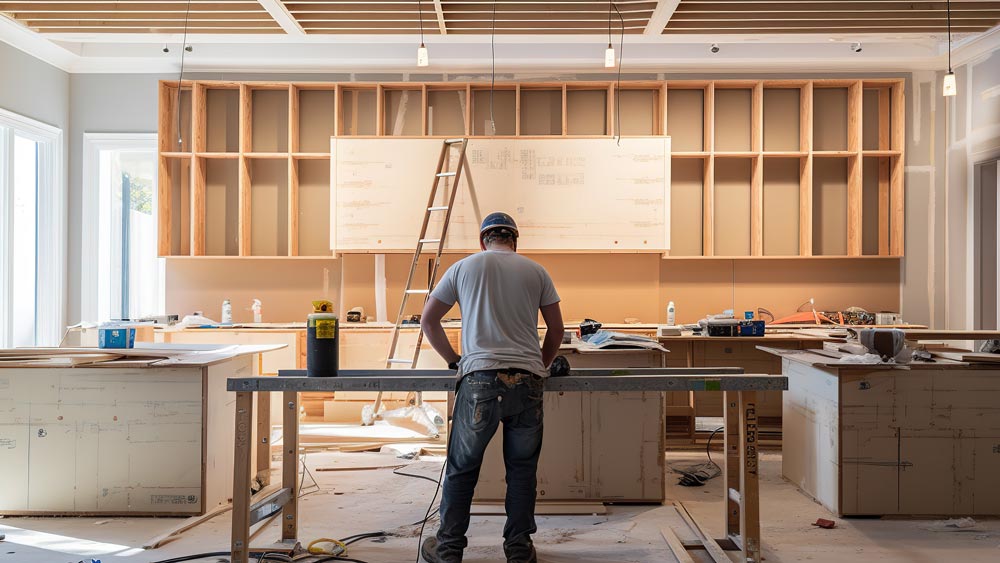When homeowners begin the journey of renovating a space—be it a kitchen, bathroom, addition, or full-home transformation—they often imagine the end result: the sparkling new countertops, the luxurious shower, or the seamless flow of an open floor plan. What they may not always see, however, is the intricate choreography that brings these dreams to life. Behind every successful renovation is a team of professionals working in harmony—and one of the most essential players on that team is the Lead Carpenter.
In the design+build model, where planning, design, and construction are integrated into one seamless process, the Lead Carpenter can play a pivotal role. This position bridges the gap between design intent and construction execution, ensuring that every detail is managed with precision, every timeline is respected, and every homeowner is kept in the loop.
What Is a Lead Carpenter?
A Lead Carpenter is not just a skilled tradesperson—they are the on-site project manager, quality controller, team leader, and client liaison all rolled into one. The Lead Carpenter operates at the job site, translating blueprints into built environments and ensuring that the renovation process moves smoothly from start to finish.
This role is especially critical in design+build firms where integration and communication between the design and construction teams are foundational. The Lead Carpenter ensures that what was envisioned on paper is translated faithfully—and feasibly—into the real-world structure.

Key Responsibilities of a Lead Carpenter
The responsibilities of a Lead Carpenter vary by firm and project size, but the core expectations remain consistent:
1. On-Site Project Management
The Lead Carpenter oversees the daily progress of the renovation site. They manage schedules, order materials, coordinate with subcontractors, and solve problems in real-time. This hands-on leadership minimizes delays and miscommunication, which are common pitfalls in traditional design-bid-build models.
2. Quality Control and Craftsmanship
With years of carpentry experience under their belt, a Lead Carpenter sets the quality standard for the project. They ensure that every framing line is level, every cabinet is installed properly, and every finish meets the client’s expectations. Their eye for detail and commitment to craftsmanship directly influence the quality of the final result.
3. Client Communication
Home renovations are personal. Homeowners want to know who’s in their house, what’s happening each day, and when their home will be finished. The Lead Carpenter often becomes the homeowner’s primary point of contact, offering updates, addressing concerns, and building trust throughout the process.
4. Coordinating Trades and Team Members
From electricians to plumbers to drywall installers, many specialists are involved in a successful renovation. The Lead Carpenter ensures that each trade partner is scheduled efficiently and that their work integrates seamlessly with the overall plan.
5. Troubleshooting and Problem Solving
Unexpected challenges are par for the course in remodeling—especially in older homes. Whether it’s hidden water damage or structural surprises, the Lead Carpenter assesses the situation, collaborates with the design and production team, and finds the best solution quickly and efficiently.
“Design+build firms often invest heavily in training and retaining Lead Carpenters because they are instrumental to the client experience and final product.”
Why the Lead Carpenter Model Works Best in Design+Build Firms
Design+build firms thrive on collaboration and accountability. By keeping the entire renovation process—design through construction—under one roof, they reduce friction, shorten timelines, and improve communication. The Lead Carpenter model fits this approach perfectly.
Here’s why:
Centralized Leadership On-Site
Their presence helps projects stay on track and allows for real-time feedback loops between the job site and the design office.
Improved Communication
Having a single point of contact for the homeowner and subcontractors prevents misunderstandings and misaligned expectations. It also builds rapport with the client, who feels more informed and involved.
Faster Decision-Making
The Lead Carpenter is empowered to make on-the-spot decisions—or at least escalate issues quickly—keeping the project moving forward.
Accountability and Ownership
Lead Carpenters take ownership of their projects. This pride in workmanship leads to better outcomes and fewer callbacks, which is a win for both the homeowner and the firm.

Traits of a Great Lead Carpenter
The best Lead Carpenters share a mix of hard and soft skills that allow them to excel in both construction and client service. These include:
- Technical Expertise in carpentry and general construction
- Leadership Skills to manage crews and subcontractors
- Strong Communication with clients and design teams
- Problem-Solving Ability to address issues creatively and effectively
- Organizational Skills for managing timelines and materials
- Attention to Detail in every phase of the project
Design+build firms often invest heavily in training and retaining Lead Carpenters because they are instrumental to the client experience and final product.
Final Thoughts: Building Trust with Every Nail
Home renovations can be stressful—but they don’t have to be. With the right people in place, the process can feel exciting, empowering, and even enjoyable. The Lead Carpenter plays a central role in making that happen.
If you’re exploring a renovation project, ask prospective firms about their production process. Do they use a Lead Carpenter model? Who will be managing your project day to day? Who will be in your home and how often?
These aren’t just logistics—they’re the foundation of a successful renovation experience.
Oakland County Design+Build Home Renovations
Looking to work with a team that puts craftsmanship, communication, and client care first? Contact us here and explore how our Lead Carpenters at Renovation By Design bring your dream spaces to life—on time, on budget, and beyond expectations.












